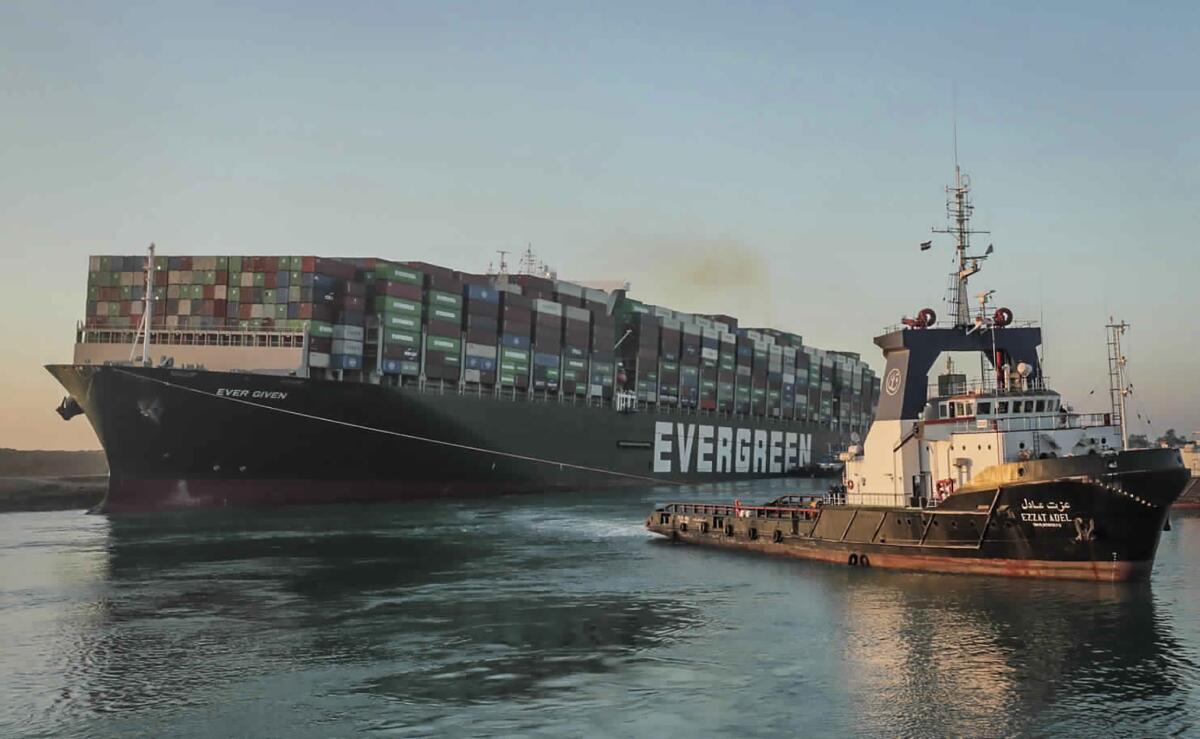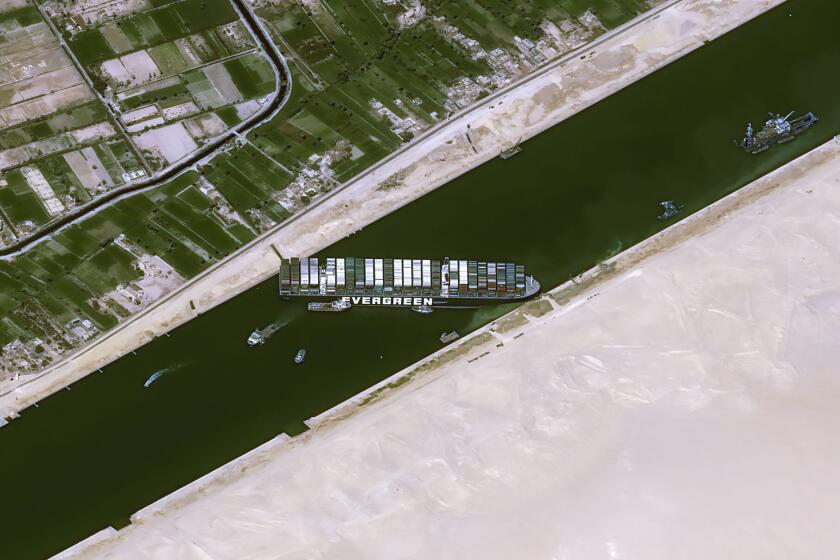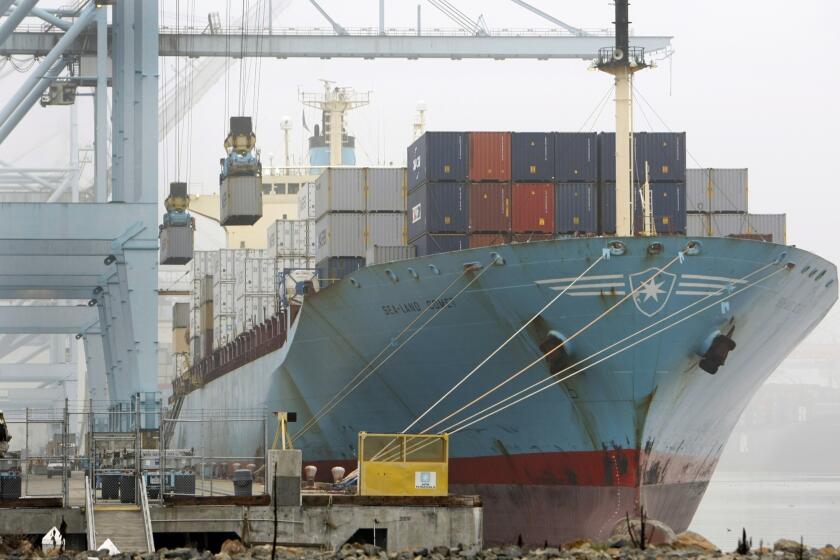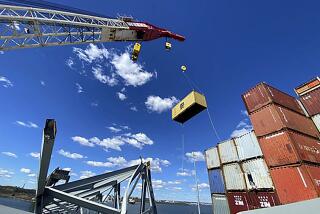With ship now freed, investigation into Suez Canal blockage begins

Experts on Tuesday boarded the massive container ship that had blocked Egypt’s vital Suez Canal and disrupted global trade for nearly a week, seeking answers to a single question that could mean billions of dollars in legal implications: What went wrong?
As convoys of ships again began traversing the artery linking the Mediterranean and Red seas, hundreds more vessels sat idle, awaiting their turn in a process that will take days. Egyptian government officials, insurers, shippers and others similarly waited for more details about what caused the skyscraper-sized Ever Given to become wedged across the canal’s single lane a few miles north of its southern entrance, on March 23.
When blame gets assigned, it could turn into years of litigation over the costs of repairing the ship, fixing the canal and reimbursing those who saw their cargo shipments disrupted. And with the vessel being owned by a Japanese firm, operated by a Taiwanese shipper, flagged in Panama and now stuck in Egypt, matters could quickly become an international headache.
“This ship is a multinational conglomeration,” said John Konrad, the founder and CEO of the shipping news website gcaptain.com.
Experts boarded the Ever Given as it idled Tuesday in Egypt’s Great Bitter Lake, just north of the site where it previously blocked the canal. A senior canal pilot, speaking on condition of anonymity because he was not authorized to talk to journalists, told the Associated Press that experts were looking for signs of damage and clues to the cause of the vessel’s grounding.
Damage to the vessel could be structural, Konrad said. Stuck for days across the canal, the ship’s middle rose and fell with the tide, bending up and down under the tremendous weight of some 20,000 containers across its quarter-mile length. On Monday, when workers partially refloated the ship, all that pressure fled to its bow, which acted as a pivot until the ship ultimately came free.
The stranded ship in the Suez Canal is the latest incident in the waterway’s dramatic history — one that could cost untold losses in worldwide trade.
“Structural integrity is No. 1. ... There was a lot of strain on that ship as it was sagging in the waterway,” Konrad said. “They have to check everything for cracks and particularly that rudder and the propeller in the back that’s connected to the engine room.
“And then they have to go through all the mechanical equipment, make sure they test the engines, all the safety valves, all the equipment, and then determine that it’s safe to sail either by itself or with a tug escort to the next port,” he added.
As of Tuesday morning, more than 300 vessels carrying everything from crude oil to cattle were waiting on both ends of the Suez Canal and in the Great Bitter Lake for permission to continue sailing to their destinations, canal service provider Leth Agencies said. More than three dozen vessels that had waited for the Ever Given to be freed had already exited the canal into the Red Sea since the waterway was reopened for navigation at 6 p.m. Monday.
As of Tuesday morning, more than 300 vessels were waiting on both ends of the Suez Canal and in the Great Bitter Lake for permission to continue sailing to their destinations, Leth Agencies said.
What if insurgents close the Suez Canal?
Lt. Gen. Osama Rabie, head of the Suez Canal Authority, had told reporters Monday that traffic could return within four days to its average level. Analysts say it could take at least 10 days to clear the backlog of ships on either end of the Suez Canal.
The Ever Given’s owner, Japanese company Shoei Kisen Kaisha, said Tuesday that it would participate in the investigation along with other parties, though it did not identify them. It also declined to discuss possible causes of the grounding, including the ship’s speed and the high winds that buffeted it during a sandstorm, saying it could not comment on an ongoing investigation. Initial reports also suggested that a “blackout” struck the vessel, something denied by the ship’s technical manager.
The company added that any damage to the ship was believed to be mostly to its keel. Shoei Kisen Kaisha said it was not immediately known whether the vessel would be repaired in Egypt or elsewhere, or whether it would eventually go on to its original destination, the Dutch port of Rotterdam. That is a decision to be made by its operator rather than the shipowner, the company said.
The grounding of the Ever Given halted maritime commerce worth billions of dollars a day. Those losses, as well as physical damage from the incident, will probably spawn lawsuits.
News Alerts
Get breaking news, investigations, analysis and more signature journalism from the Los Angeles Times in your inbox.
You may occasionally receive promotional content from the Los Angeles Times.
Shoei Kisen Kaisha is covered for about $3 billion in liability insurance through the International Group of Protection and Indemnity Clubs, a group of 13 not-for-profit mutual insurers used by the vast majority of global shipping firms.
Global legal firm Clyde and Co. said the Ever Given’s owner likely would pay Egypt’s canal authority for the assistance already rendered to the vessel. The authority also could fine the Ever Given.
“We anticipate a detailed investigation will follow which will determine the cause,” the firm said. ”Evidently the cause will impact upon the legal liabilities of the ship and cargo interests.”
On Monday, a flotilla of tugboats, helped by the rising tide, wrenched the bulbous bow of the Ever Given from the canal’s sandy bank, where it had been firmly lodged since March 23. The tugs blared their horns in jubilation as they guided the mammoth cargo ship through the water after days of futility that had captivated the world, drawing scrutiny and social media ridicule.
A flotilla of almost a dozen cargo vessels sits anchored just south of Los Angeles this weekend, waiting for berth space.
The Ever Given had crashed into a bank of a single-lane stretch of the canal less than four miles north of the southern entrance, near the city of Suez.
At least 367 vessels, carrying everything from crude oil to cattle, had backed up to wait to traverse the 120-mile canal. Dozens of others decided to reroute, sailing around the Cape of Good Hope at Africa’s southern tip — a 3,100-mile detour that costs ships hundreds of thousands of dollars in fuel and other expenses.
The crisis cast a spotlight on the vital trade route through the canal, which carries about 10% of global trade, including 7% of the world’s oil. More than 19,000 ships ferrying Chinese-made consumer goods and millions of barrels of oil and liquefied natural gas flow through the artery from the Middle East and Asia to Europe and North America.
The unprecedented shutdown, which raised fears of extended delays, goods shortages and higher prices for consumers, has prompted new questions about the shipping industry at a time when the global supply chain is already under pressure owing to the COVID-19 pandemic.
More to Read
Start your day right
Sign up for Essential California for news, features and recommendations from the L.A. Times and beyond in your inbox six days a week.
You may occasionally receive promotional content from the Los Angeles Times.








